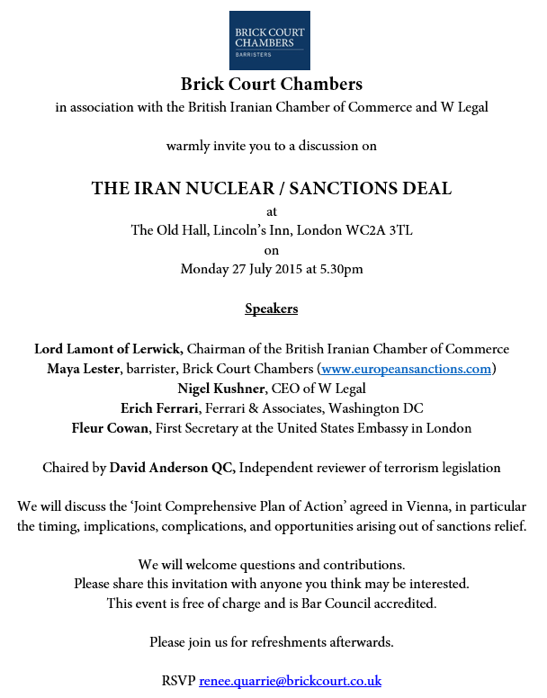Aircraft Parts To Iran: Open For Business Or Not Really?
Since last November when the the P5+1 entered into the Joint Plan of Action (“JPOA”) with Iran concerning Iran’s disputed nuclear program, there has been a great deal of interest in the portion of the JPOA’s sanctions relief dealing with exports of aircraft parts necessary for the safety of commercial passenger aircraft operating in Iran. Many people applauded this relief as significant and one that would truly benefit the Iranian people. Such applause, however, neglected the fact that the U.S. has long maintained a positive licensing policy concerning the export of U.S. origin aircraft parts for U.S. origin commercial passenger aircraft operating in Iran. That policy is codified at 31 C.F.R. 560.528. The JPOA, through the JPOA Statement of Licensing Policy (“JPOA-SLP”) expanded upon that policy to include different types of aircraft and non-U.S. origin parts. That licensing policy will expire at the same time as the JPOA on July 20, 2014.
Like many things with the JPOA, there have been overly optimistic expectations as to how it will work. It is not just as easy as lining up and telling the United States Department of the Treasury’s Office of Foreign Assets Control (“OFAC”) that you want to sell some parts in Iran. There are number of impediments to engaging in transactions under this licensing policy, which have not really been advertised or reported on.
For example, certain airlines are not allowed to be the recipients of the aircraft parts. I’m not talking about those parties, other than Iran Air, who are designated on OFAC’s Specially Designated Nationals and Blocked Persons List (“SDN List”). I’m referring to some non-designated airlines for which license applications are being denied and/or revoked. There are currently five such airlines who, although not designated, are ineligible for licensed exports under the JPOA-SLP.
Further, a number of parties have tried to get into the aircraft exporting business by brokering sales on behalf of Iranian airlines. The assumption is that since the JPOA-SLP allows for licenses to be issued for aircraft parts and services to be exported to Iran, that other types of transactions related to such exports are authorized. This is a mistaken belief that we often see in relation to exports of food, medicine, and medical devices to Iran. The truth is that if you are not a manufacturer of aircraft parts, a distributor that stocks such parts, or a service provider of servicing aircraft parts, then you are likely considered to be brokering and that brokering service will require a license from OFAC.
Finally, the JPOA-SLP, while expanding upon an already existing licensing policy and being reported as a broad policy, is actually narrowly construed. It is important to note that the policy is for exports of commercial passenger aircraft only. It does not necessarily extend to helicopters, cargo airplanes, hot air balloons, etc. In other words, the JPOA-SLP is not a general aviation policy, but rather one focused on Iran’s commercial passenger fleet.
The morale of the story is that, as with everything OFAC related, you need to delve into the details to really understand what you can and can’t do under their authorizations and policies. Moreover, what’s being reported in the news, such as the success of Boeing and General Electric exporting to Iran under the JPOA-SLP, is not exactly as it appears. Therefore, if you are intending to export to Iran under the JPOA-SLP it makes sense to go to OFAC first and make sure everything you want to do is feasible before you spend too much time on pursuing projects which may not be contemplated by this new licensing policy.



